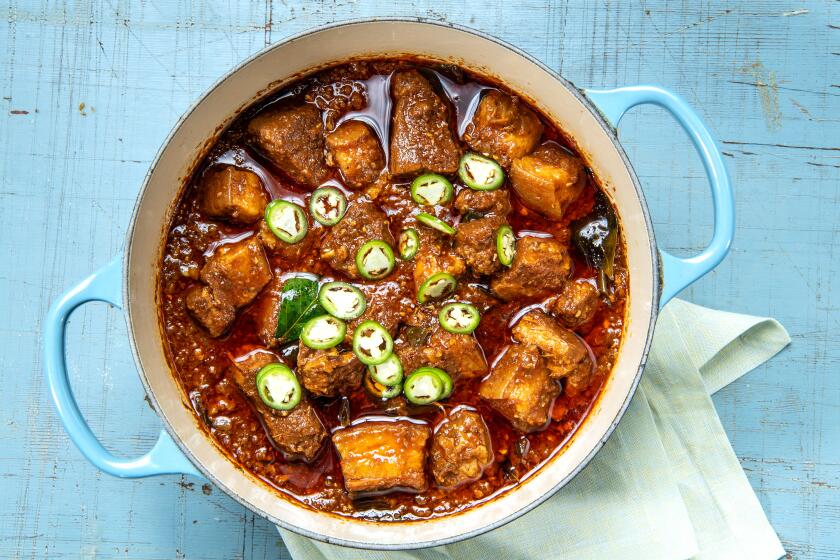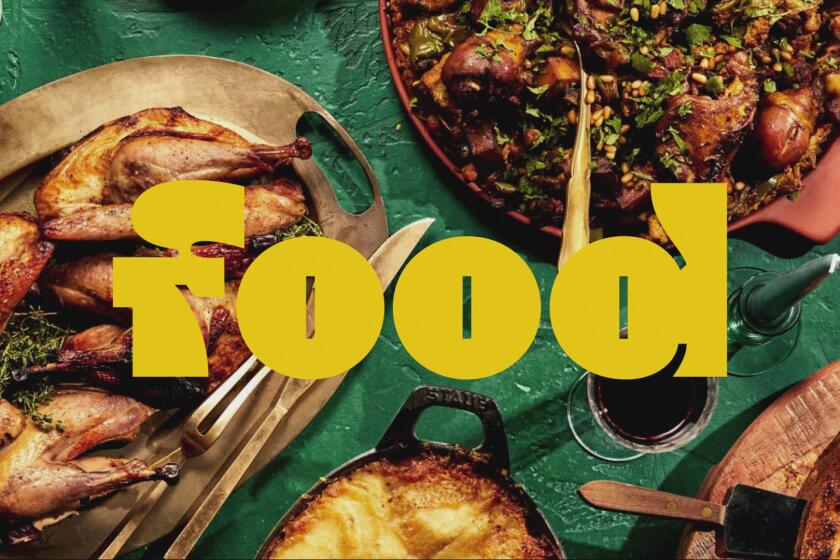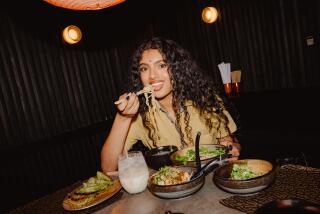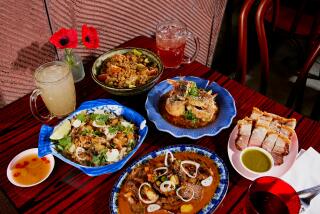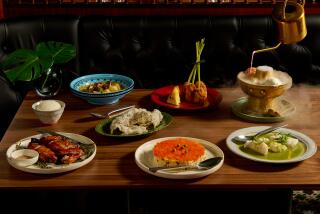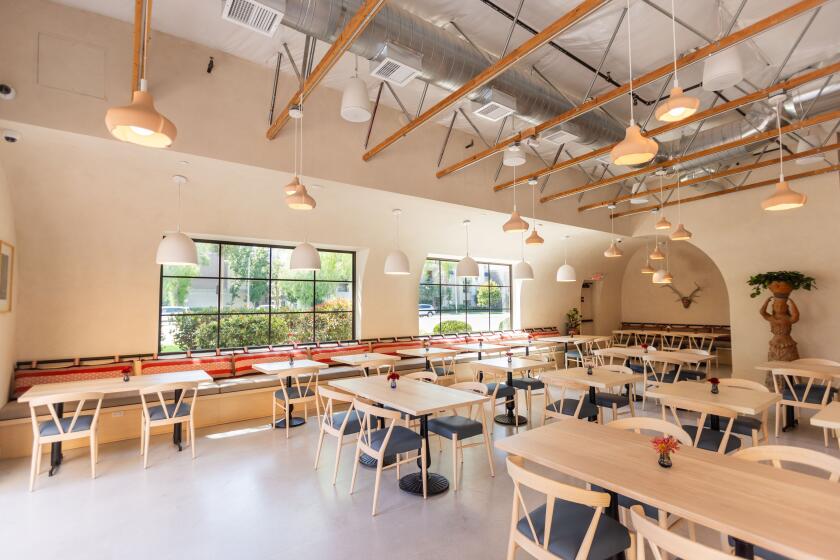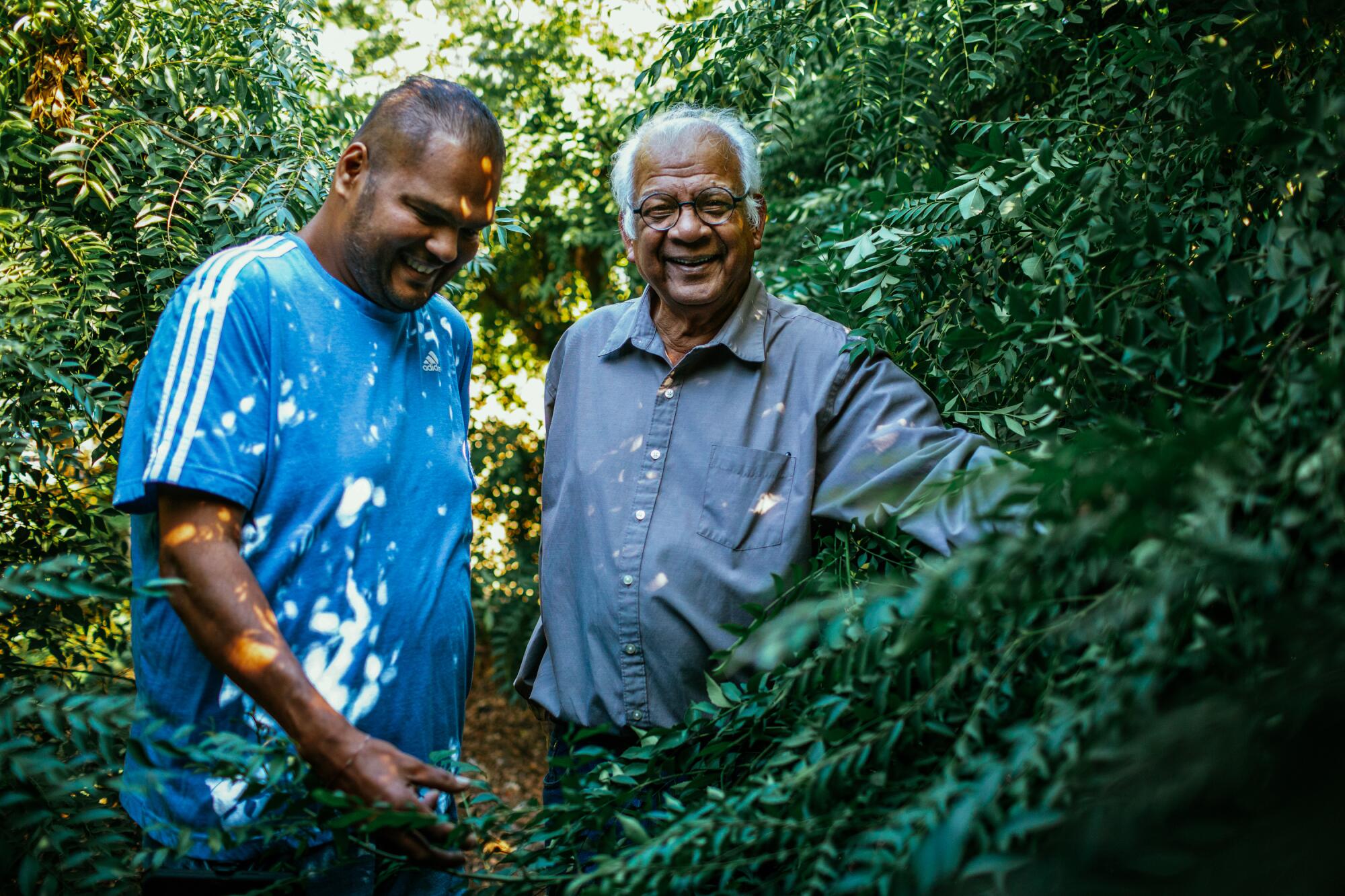
On a private road in the Avocado Heights neighborhood of La Puente, Anand Prasad’s farm appears mirage-like in the dust — a surprising swath of tropical green. A few thousand curry trees occupy his modest few acres of land: 18- to 20-year-old plants lush enough to hide in; vigilantly pruned younger ones with lanky trunks and scruffy tops, Seussian in their teenage awkwardness; and eager seedlings that seem to answer the question of whether the 70-year-old farmer might retire anytime soon.
The handsome elliptic leaves of the subtropical Murraya koenigii, a citrus relative, are a staple in South Indian cooking, and the plants grow freely in Prasad’s home country of Fiji.
“It’s such a tropical climate, curry leaves pop up everywhere — there’s one in every house,” he says of Fiji. But here, in California, it’s a rarity, “because they don’t grow that well.”
From store-bought powder to homemade spice mixes, curries are just the thing to warm up dinner on cool nights.
That’s a benefit to Prasad, who finds himself one of the few farmers growing curry leaves in the state. The threat of the Asian citrus psyllid, which can carry Huanglongbing, also known as HLB or greening disease, has fueled strict policies by the California Department of Food and Agriculture. As writer Hugh Merwin documented after a failed attempt to drive a tree from Brooklyn to Los Angeles, it’s not easy to bring curry plants here.
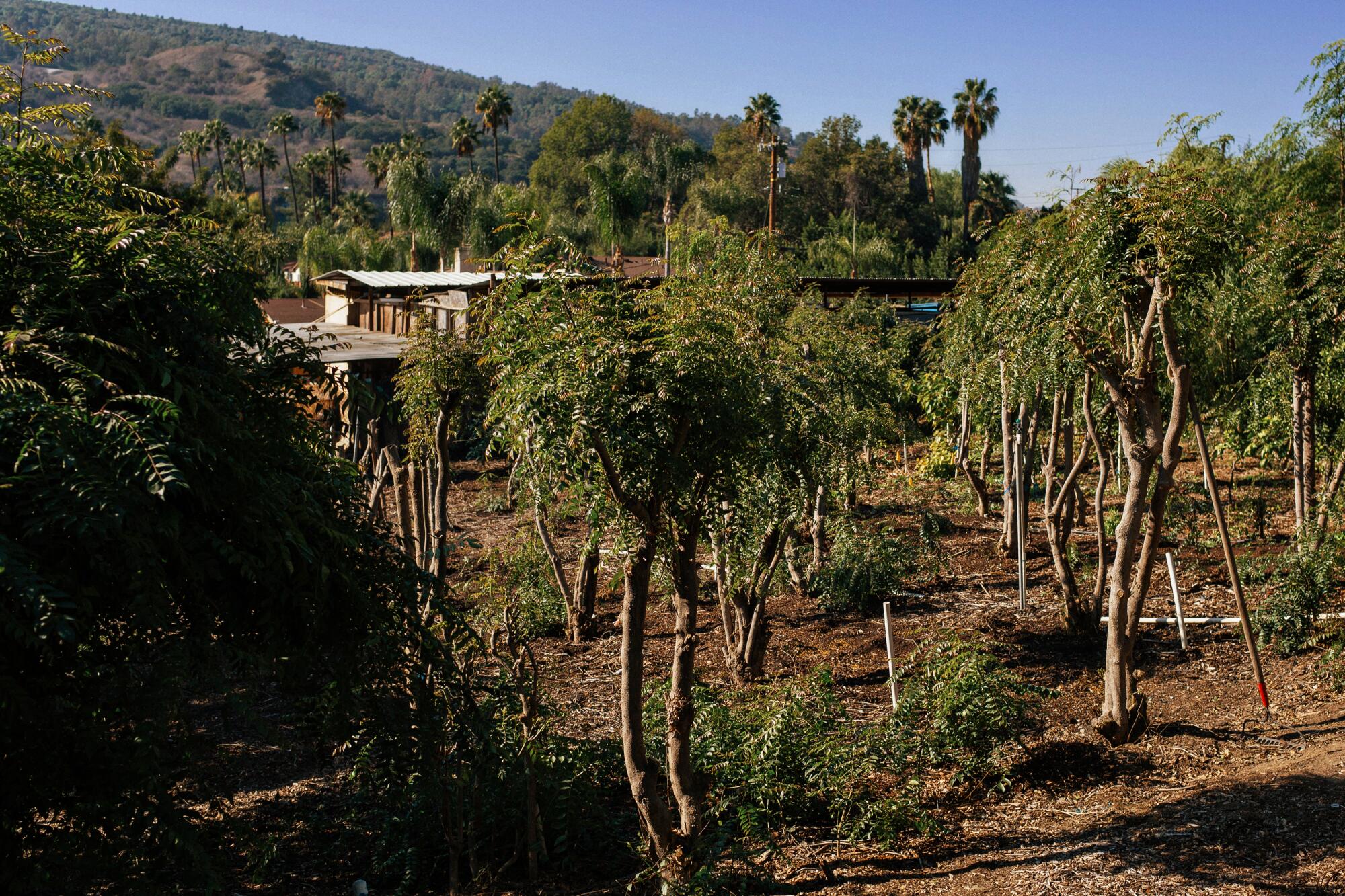
“Winter is coming in Northern California, so they can’t grow curry leaves — it will be too cold,” Prasad says. “That’s why I am saving leaves to go over there. They do grow it in Santa Cruz, but not much. They have curry leaf in Florida, but they cannot come to California because they have HLB disease and the USDA won’t let them bring it here. I’m in the city. If someone wants 10 to 20 pounds, I get a phone call. I’ll be there.”
In 2000, Prasad made the decision to leave his plumbing and construction business and start a farm. He chartered a Cessna and flew over Southern California to find a plot of land to sow. It wasn’t a complete surprise to his family. Prasad’s grandfather, born in Uttar Pradesh in northern India, was brought to Fiji as an indentured servant to work in sugarcane fields. Growing up, Prasad’s family raised sugarcane, rice and pineapple.
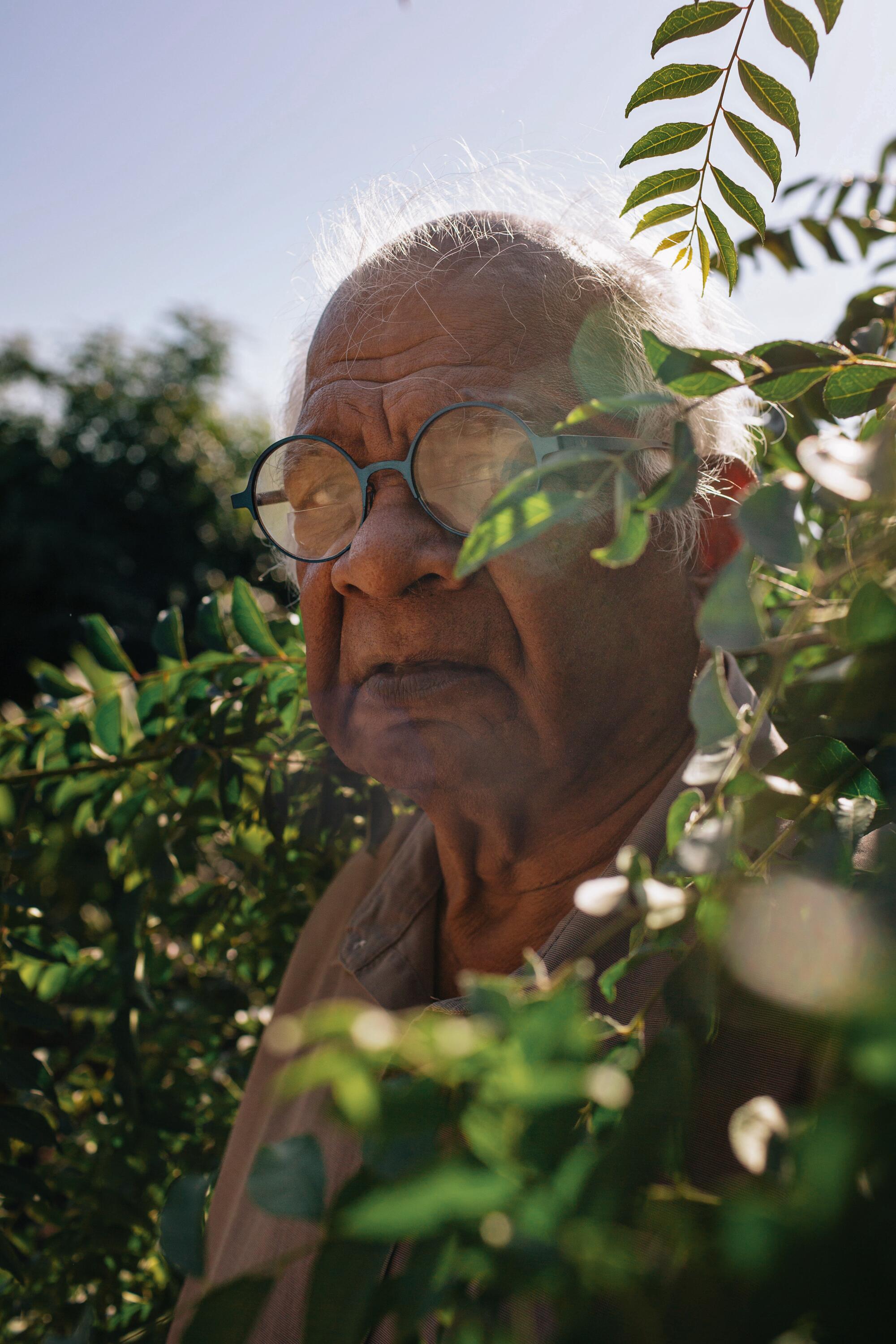
According to his stepdaughter — author, cook and television host Padma Lakshmi — Prasad has always been a talented gardener. “He’s always had a green thumb,” she says by phone from New York. “He was a farmer growing up, and when he first came to America, he thought that being in construction, a carpenter or plumber were more lucrative, but he’s always loved the garden. We used to joke about him, when we were young, that if he picked up the telephone the receiver would start growing vines because everything he touches turns green, in a beautiful way.”
Among the curry trees, he grows a few gunda (“Indian olive”), moringa, avocado (he shares the fruit with his neighbors) and neem (or Indian lilac) trees, as well as beans, radish, cilantro and bitter melon for himself and his wife.
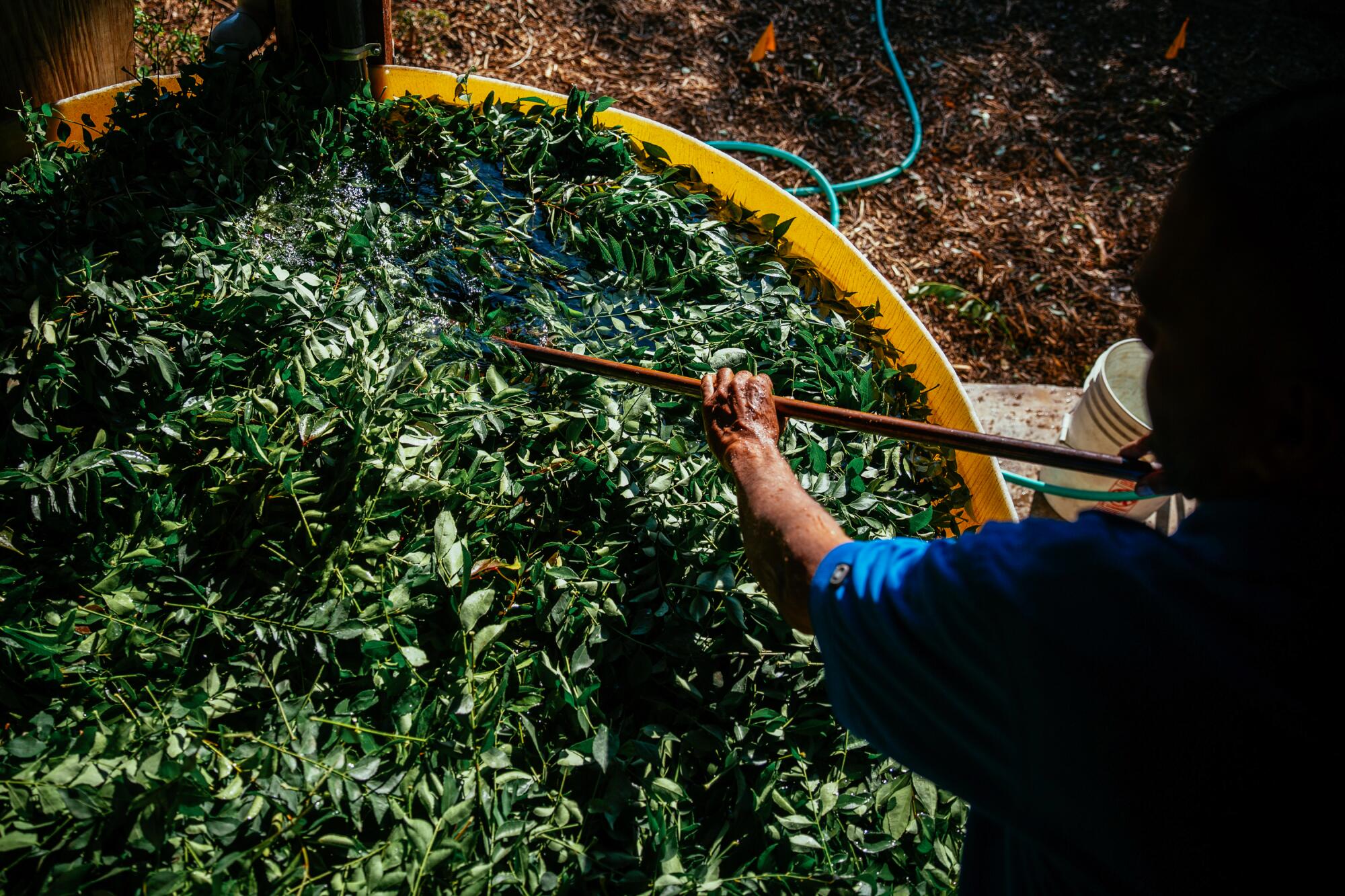
Fresh curry leaves are preferable to dried, so most of Prasad’s business is centered on washing, storing and shipping the fresh leaves out while they’re vibrant. His leaves are radiant and pungent, and the oil embeds a persistent scent on skin that’s unmistakable but elusive to describe — an herbaceous residue of tobacco, pepper and lime that’s simultaneously warm and wintry, tropical and dry.
He prunes the trees with a chainsaw to keep bugs away, and picks, washes and strips the leaves, sometimes drying and grinding them with an industrial-size grinder that he adapted with a power hookup and a wooden platform to increase efficiency.
Prasad’s ingenuity, and experience as a contractor and plumber, is embedded in every aspect of his farm. A house and patio are staging areas for various contraptions he’s invented or adjusted to improve his curry leaf production process. Inside, curry leaves dry on rows of handmade wood-and-wire racks and a Maytag dryer without a top serves as a large salad spinner for his washed crop. An industrial fridge on the patio, gratis from a local Subway sandwich shop, teems with curry leaves, which will stay fresh for up to three weeks.
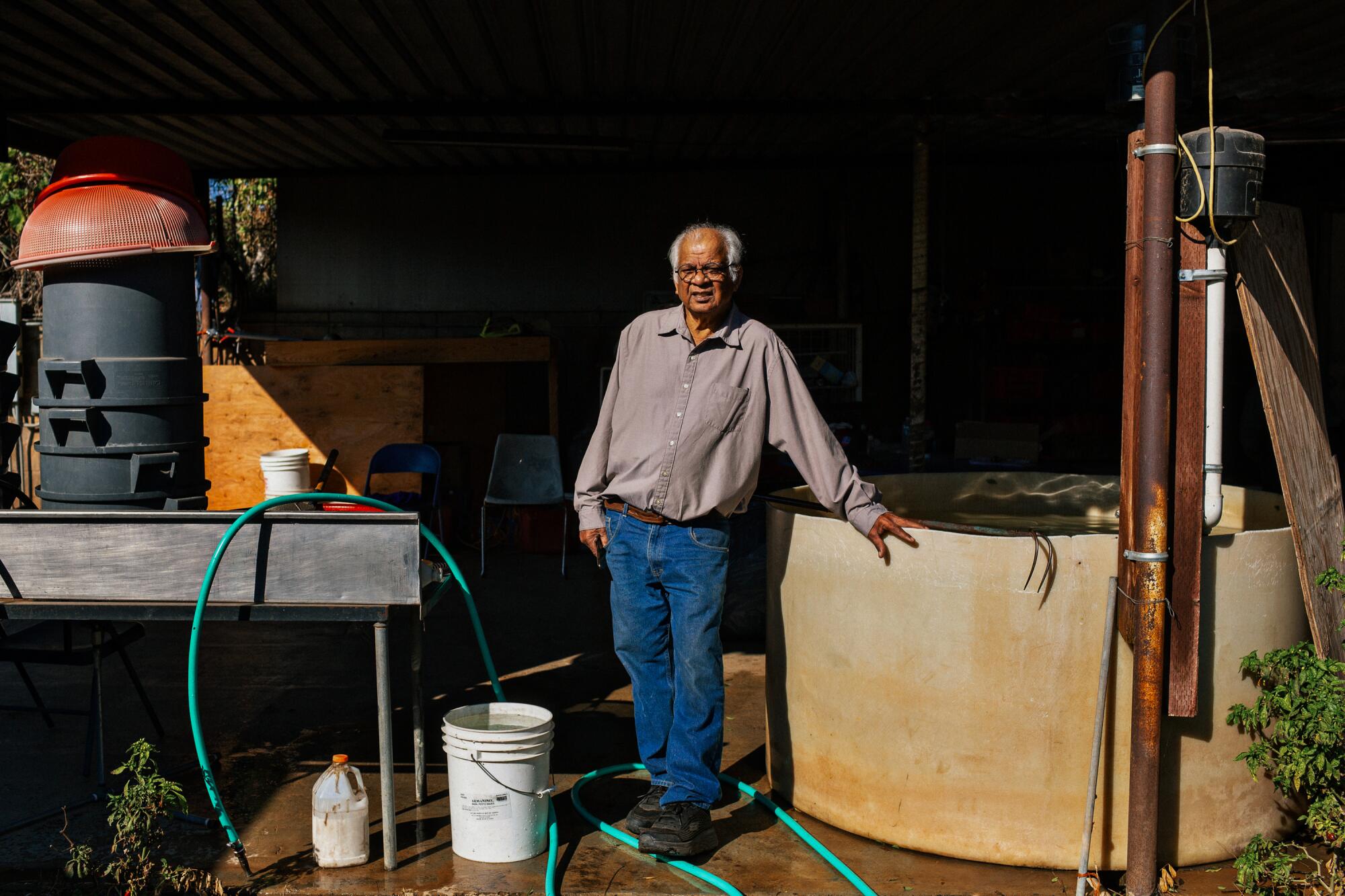
When I visit, Prasad is busy weighing Priority Mail boxes stuffed with fresh curry leaves for wholesale. He recently learned he could ship via U.S. Postal Service at a discount, so he started packing and weighing leaves to figure out how much would fit in each box, then monitored the leaves over a number of days to determine their shelf life. The wholesale business supplements his partnerships with the spice company Burlap & Barrel, which sells a ground expression of his curry leaf, and a number of Indian markets, like Pioneer Cash and Carry in Artesia, which also stock his leaves for use in restaurants and home cooking.
“I’m from South India, and every meal and every stew or chutney has curry leaves in it,” Lakshmi says. “Curry leaves frying in oil with mustard seeds is the aroma that sends me back to my grandmother’s kitchen immediately.”
Barkha Cardoz, who launched a line of spices and masala curry powders with Burlap & Barrel in honor of her late husband, Indian chef and restaurateur Floyd Cardoz, describes Prasad’s leaves as a game-changer when it came to recipe testing.
“That amazing nuttiness that you get from the curry leaf is so predominant because of these leaves that this amazing man grows,” she says over the phone from India, where she was visiting family. “You can really tell the difference when you get something that’s coming direct to you and hasn’t been sitting in a warehouse somewhere.
From Times editors Laurie Ochoa and Daniel Hernandez: There’s no better place or moment for eating and cooking than in Los Angeles right now.
“It’s a labor of love. And it’s so visual in his being when you have a conversation with him and even when you see the product coming out. The leaves look good — they’re bright, they’re green, they’re not muddy and frail-looking.”
Years ago, Lakshmi introduced Floyd Cardoz, best known internationally for his New York restaurants Tabla and Paowalla, to her stepfather, a connection that led to the chef using Prasad’s curry leaves. After Cardoz’s death, in March 2020, Burlap & Barrel started experimenting with a spice blend to re-create the marinade for the beloved green tikka masala from the menu at Tabla. The team ordered dried leaves on the internet, but they couldn’t approximate Floyd’s flavor, recalls Barkha.
“We just couldn’t get it right because the dried leaves that we were getting that were available in the market didn’t have that almost earthy, umami, bright flavor that I needed,” she says. “Because there’s nothing else in the tikka masala that holds it together like the curry leaves.”
Eventually, Burlap & Barrel co-founder Ethan Frisch remembered that Floyd Cardoz had sourced his curry leaves from someone in L.A. They found Prasad, and he agreed to send them leaves.
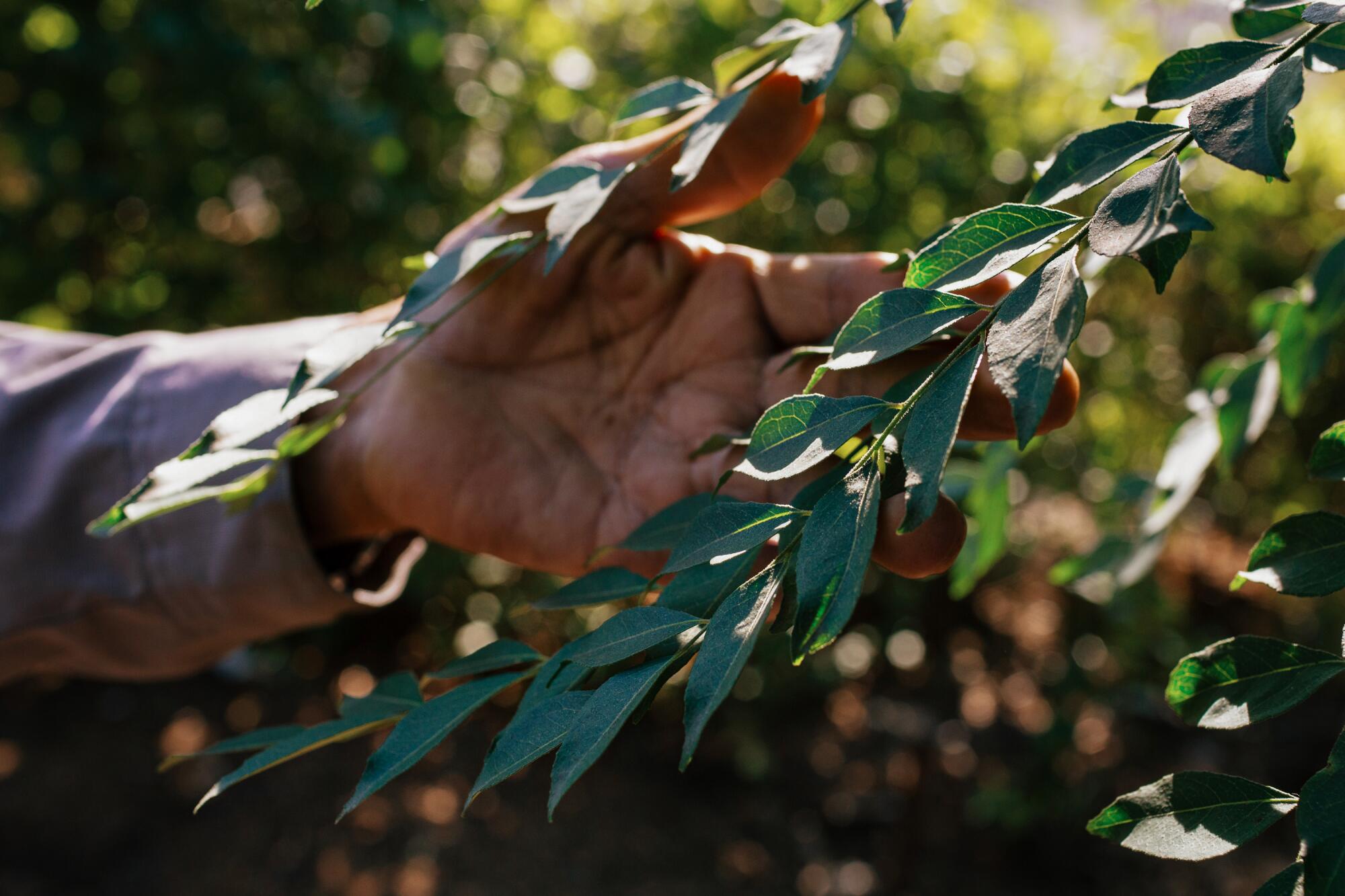
“He had just literally sun-dried them and sent them to us,” Barkha says.
She made the green tikka sauce with Prasad’s leaves, added some chicken and left it in the fridge to marinate before she left town. She asked her son, who was home at the time, to cook and taste it the next day.
“I remember him calling me,” she says, “and he’s like, ‘Oh Mom, that’s Dad’s food.’”
Burlap & Barrel bought Prasad a large grinder and added Prasad’s Curry Leaf to its spice cabinet. They found that, unlike dried curry leaves, which are too brittle to fry in oil as you would fresh ones, the powder increases surface area and flavor absorption and avoids the problem of shards of dried leaves in the dish. Miniature (0.8-ounce) jars of the fine verdant powder, which looks like matcha and smells like spicy grass, almost weed-like in its essence, sell for $11.99. (A 1.8-ounce jar of Floyd Cardoz collection green tikka masala powder, with Prasad’s curry leaves in the mix, is also $11.99.)
The powder is a rather novel and heady invention, an anecdote of the glossy leaves on his trees. When I ask Prasad what he uses it for, the answer is: everything.
“I have it on my table like you have a salt and pepper bottle,” he says. “I have a curry leaf bottle. Whenever I eat, I put as much as I want. My rice, green curry, any food.”
In La Puente, Prasad’s trees might not have started as locals, but they’ve come to define the land. All they really needed was that reliable sun and the touch of the green Midas who understands what it takes to thrive far from home.
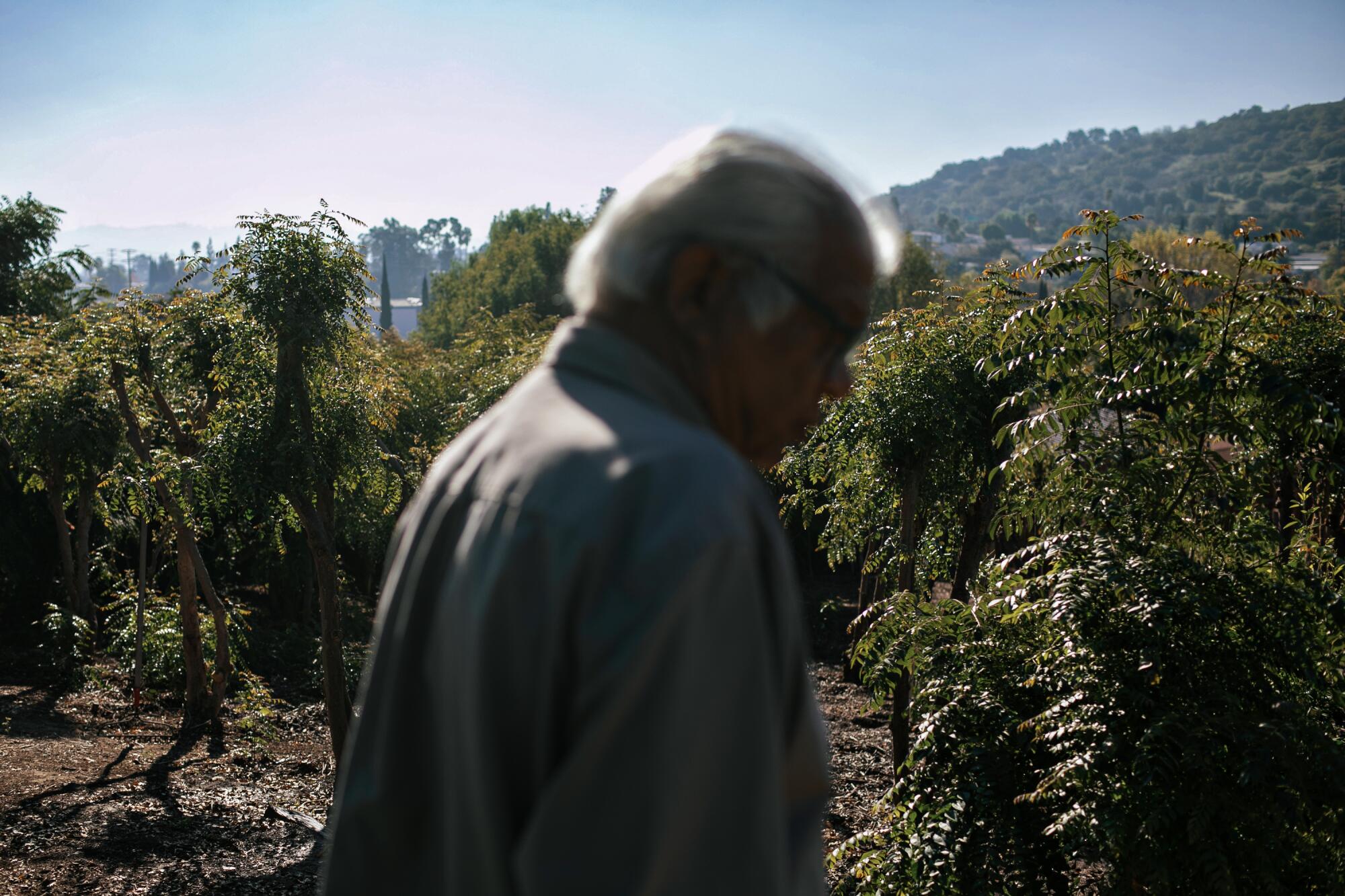
More to Read
Eat your way across L.A.
Get our weekly Tasting Notes newsletter for reviews, news and more.
You may occasionally receive promotional content from the Los Angeles Times.
